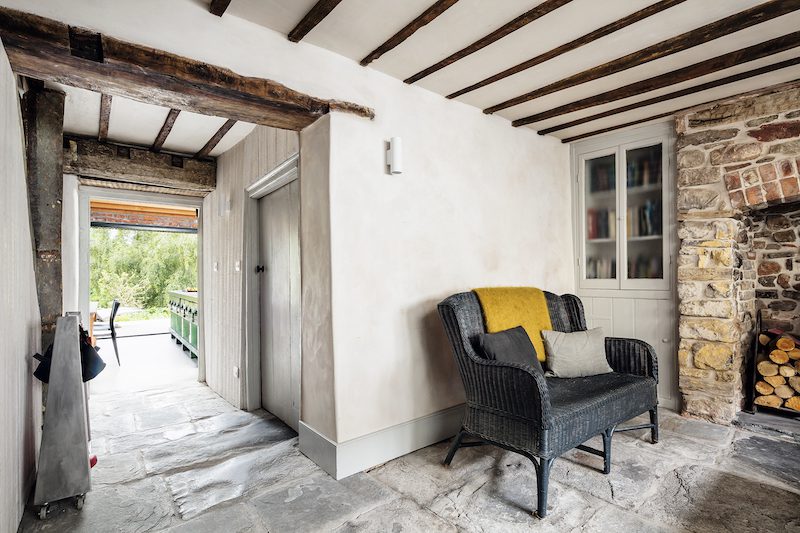In an era marked by growing environmental concerns, it is crucial for the construction industry to prioritize sustainable and eco-friendly practices. By adopting environmentally conscious choices, we can reduce our carbon footprint, conserve natural resources, and create healthier living spaces. One such choice is the use of lime plaster, a traditional building material that offers numerous benefits over synthetic alternatives.
Lime plaster has gained popularity in recent years due to its exceptional properties and positive impact on the environment. Unlike synthetic alternatives, lime plaster is a natural material that has been used for centuries. Its unique composition and application techniques result in a durable, aesthetically pleasing finish that contributes to the longevity and sustainability of buildings.
Making conscious choices in construction can significantly contribute to environmental protection. By selecting materials like lime plaster, which have lower environmental impacts, we can play an active role in mitigating climate change, reducing waste, and fostering a more sustainable future.
What is Lime Plaster?
Lime plaster is a traditional building material made from a mixture of slaked lime, aggregates, and water. It is applied as a thick paste onto walls and ceilings, and over time, it hardens into a durable and breathable surface. Lime plaster has been used since ancient times and continues to be valued for its beauty, flexibility, and environmentally friendly characteristics.
When compared to synthetic options such as acrylic or cement-based plasters, lime plaster exhibits superior qualities. It offers better breathability, flexibility, and compatibility with historic and traditional structures. Synthetic alternatives, on the other hand, often create impermeable barriers that can trap moisture, leading to structural damage and the growth of mold and mildew.
There are various types of lime plaster, each suitable for specific applications. For interior walls, traditional lime plaster provides a smooth and polished finish, while textured finishes can be achieved with options like roughcast or tadelakt. For exteriors, lime render acts as a protective layer against weathering and allows for moisture to evaporate, preventing damage to the building fabric.
The Environmental Benefits of Choosing Lime Plaster
Low carbon footprint
Lime plaster has a significantly lower carbon footprint compared to synthetic alternatives. Its production process requires less energy and generates fewer greenhouse gas emissions, contributing to a more sustainable building industry.
Natural and biodegradable components
Unlike synthetic options that rely on petrochemicals and other non-renewable resources, lime plaster is composed of natural materials such as lime, aggregates, and water. These components are abundant and readily available, reducing the depletion of finite resources. Additionally, at the end of its lifecycle, lime plaster can be recycled or safely returned to the environment, minimizing waste.
Durability and longevity
Lime plaster has proven to be exceptionally durable, with examples of historic buildings showcasing its longevity. By choosing lime plaster, building owners can reduce the need for frequent repairs and replacements, resulting in less waste and resource consumption over time.
Low maintenance requirements
Lime plaster requires minimal maintenance, further contributing to its sustainability. It naturally resists cracks and can be easily repaired if needed, eliminating the need for frequent renovations. This characteristic not only reduces costs but also minimizes the waste generated from construction activities.
Improved indoor air quality
Synthetic plasters often contain volatile organic compounds (VOCs) that release harmful chemicals into the air, compromising indoor air quality. Lime plaster, being a natural and breathable material, allows moisture to evaporate, preventing the buildup of mold and mildew and promoting healthier living environments.
The Negative Environmental Impact of Synthetic Plastering Options
Synthetic plastering options, such as acrylic or cement-based plasters, have several environmental drawbacks. They rely on energy-intensive manufacturing processes, contribute significantly to carbon emissions, and deplete finite resources. Additionally, their impermeable nature can lead to moisture-related problems and reduced building durability.
Compared to lime plaster, synthetic options have a larger carbon footprint due to their energy-intensive production. They often contain harmful chemicals that can negatively impact both human health and the environment. Furthermore, their limited compatibility with historic structures makes them less sustainable in the long run.
Examples of Successful Lime Plaster Projects
Numerous successful lime plaster projects around the world showcase the versatility and beauty of this traditional material. From historic restorations to contemporary designs, lime plaster has proven its worth in various applications, including residential, commercial, and cultural projects.
Lime plaster offers a wide range of design possibilities, from smooth and elegant finishes to rustic or textured surfaces. Its compatibility with both traditional and modern architecture makes it a versatile choice for interior and exterior applications. The use of lime plaster not only enhances the aesthetic appeal of buildings but also contributes to their durability and environmental sustainability.
Conclusion
By choosing lime plaster, such as the high-quality lime plaster offered by Decorfin, we can make a significant positive impact on the environment while enhancing the beauty and longevity of our buildings. Lime plaster’s low carbon footprint, natural components, durability, low maintenance requirements, and improved indoor air quality position it as a superior choice over synthetic plastering options.
At Decorfin, we believe that making environmentally conscious choices is not just a responsibility but also an opportunity to create sustainable and resilient built environments. By selecting lime plaster for your next building project, you contribute to the preservation of natural resources, the reduction of carbon emissions, and the promotion of healthier living spaces. Contact Decorfin USA to learn more about which plaster will transform your space.



